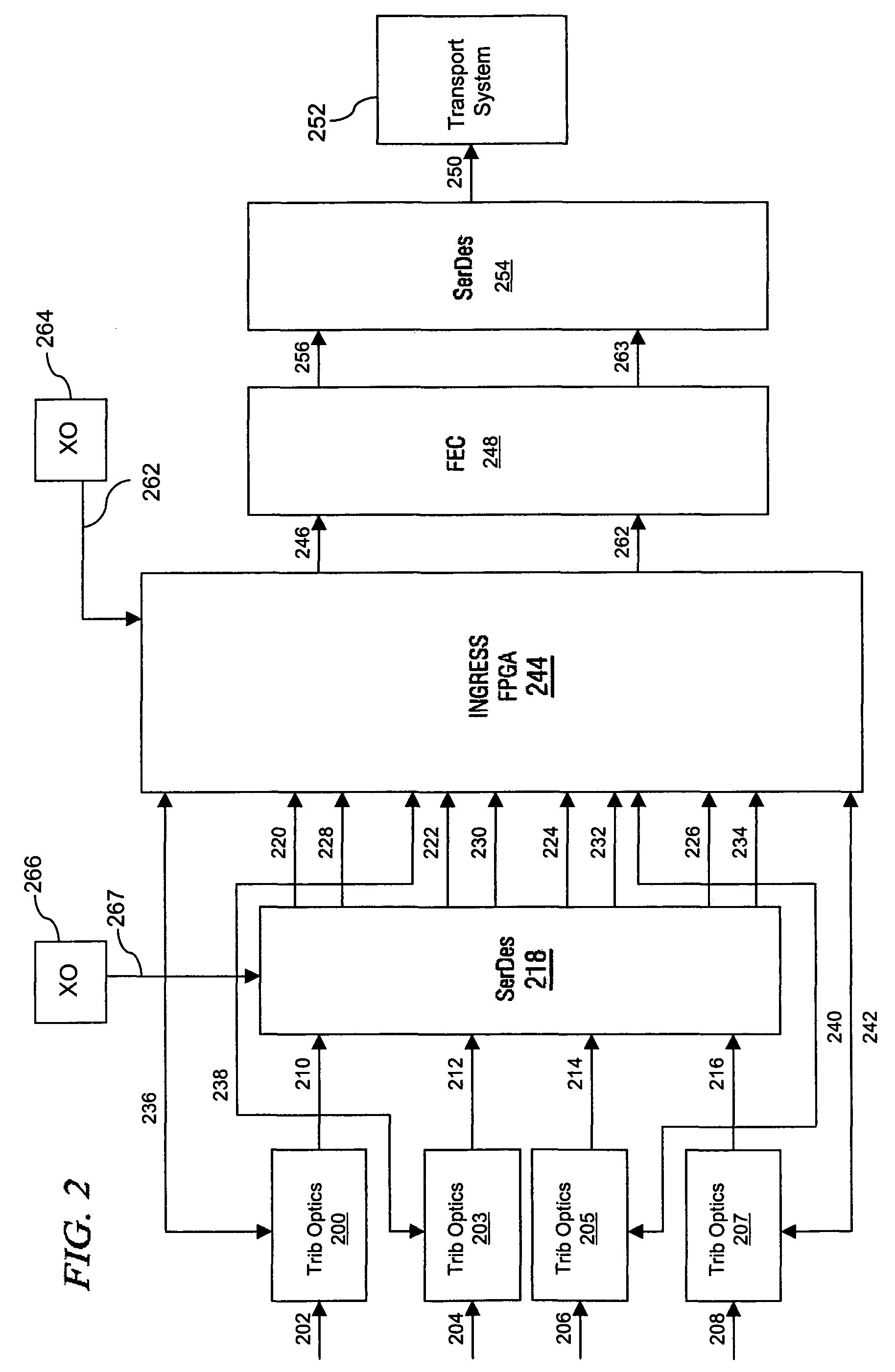Apparatus and method for fibre channel distance extension embedded within an optical transport system
a technology of optical transport system and optical channel, applied in the field of apparatus and method for fibre channel distance extension embedded within optical transport system, can solve the problems of failure of access, server access to data only on devices directly attached, and limitations of scsi standard, etc., to achieve the effect of expanding the connectivity of fibre channel storage area network, maximizing the throughput of the extended link, and sufficient buffer memory
- Summary
- Abstract
- Description
- Claims
- Application Information
AI Technical Summary
Benefits of technology
Problems solved by technology
Method used
Image
Examples
Embodiment Construction
[0042]FIG. 1 shows a block diagram of the transport system for aggregation and distance extension of two storage area networks (SAN) across a wide geographical distance 100. System 100 is a full duplex transport system, the circuits used for aggregation and recovery at both ends of the network are mirror images of each other. SAN 102 and 165 may be up to 6000 km apart. SAN 102 and 165 can be alternately a fiber channel switch or fiber channel storage device. Over shorter distance, such as 1000 km, this the invention can support synchronous replication of fibre channel or FICON. For extended distances, the invention supports fibre channel or FICON asynchronous replication.
[0043]In the preferred embodiment, Signals 105, 110, 115, 120 and 146, 150, 155, 160 may be any combination of four Gigabit Fiber Channel interfaces (1.0625 Gbps) or four 2 GFC interfaces (2.125 Gbps). In an alternate embodiment only two of the signals are used to support two 4 GFC interfaces (4.25 Gbps). In yet ano...
PUM
 Login to View More
Login to View More Abstract
Description
Claims
Application Information
 Login to View More
Login to View More - R&D
- Intellectual Property
- Life Sciences
- Materials
- Tech Scout
- Unparalleled Data Quality
- Higher Quality Content
- 60% Fewer Hallucinations
Browse by: Latest US Patents, China's latest patents, Technical Efficacy Thesaurus, Application Domain, Technology Topic, Popular Technical Reports.
© 2025 PatSnap. All rights reserved.Legal|Privacy policy|Modern Slavery Act Transparency Statement|Sitemap|About US| Contact US: help@patsnap.com



